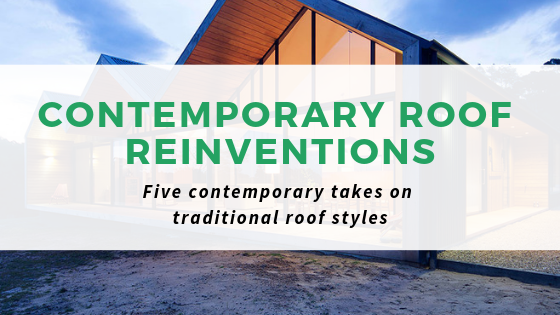
While most Australian residential housing tends to stick to the more modest end of the scale when it comes to roof design, these 5 buildings demonstrate how even the most basic profiles can be updated to give a more contemporary look and feel. Read on for a brief overview of each style and some 'then and now' examples!
Gambrel Roof
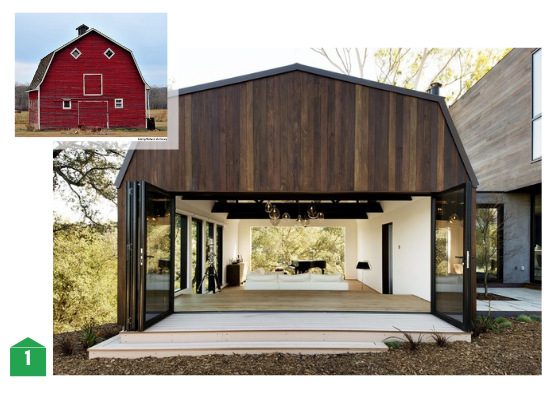
Typically a symmetrical roof with two sides, each side sloping at two angles. The lower slope is generally steeper than the upper, which is advantageous because it provides the benefits of a regular sloped roof, while maximising the headroom in the upper space and minimising the overall height of the building (imagine how tall the building would be if the lower slope continue to a peak!).
Apparently the name comes from the Medieval Latin word 'gamba', which means 'horse's hock or leg,' which the shape references.
You might recognise the style from traditional American barns. Here, the architects have renovated an existing barn to give it a modern spin.
1a) Image source: https://cf.ydcdn.net/latest/images/main/A5gambrelroof.jpg
1b) Image: Nicholas Alan Cope |Architect: Walker Workshop
Saw-tooth Roof
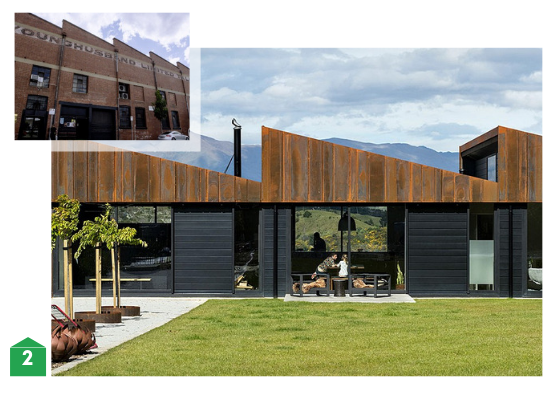
Saw-tooth roofs are most commonly recognised in old factory buildings - their name sake an obvious reference to the jagged teeth-like appearance their profile makes. Typified by a series of double pitched roofs (one generally being vertical or close to), this style addressed the issues of achieving good daylight levels within deep plan buildings prior to the prevalent use of electric light. The vertical/steeper surfaces are glazed to permit uniform, natural light over a large area. Following the rise in accessibility and popularity of artificial light to illuminate spaces, there was a decline in the use of the saw-tooth design. More recently however, the importance of natural lighting for its mood and energy efficiency benefits has risen, and the saw-tooth style has seen a re-emergence in both industrial and residential contexts.
As you can see here, the saw-tooth principles have been applied to the roof of this residential home to create a striking profile while maximising the natural lighting within the spaces below at the right times of day.
2a) Image source: City of Melbourne
2b) Image/Architect: Assembly Architects
Hipped Roof

Hip or (Hipped) roofs; a standard Aussie classic. You'll see them just about every where in your local neighbourhood and it's because of a few reasons:
- They're relatively simple to design and construct,
- They're self bracing and therefore;
- Better suited to high-wind or hurricane regions,
- They're a modest yet attractive design.
Unlike gable roofs, they have no large, flat vertical ends that can catch wind and therefore more stable.
Admittedly, you can't really reinvent the wheel with this one, but as you can see above, the use of contemporary metal roof materials, colours and profiles has transformed the humble hipped roof style into a contemporary classic.
3a) Image source: Australia Explained
3b) Image: Timothy Soar | Architect: Henning Stummel Architects
Gable Roof
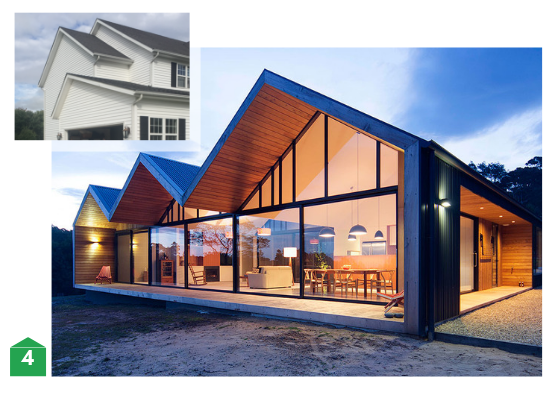
Gable roofs are another classic roof style you're probably used to seeing driving down suburban streets. It is recognisable by its two sections of sloping roof, forming a ridge where its highest horizontal edges meet. Their sloped design means snow, rain, and debris are unable to settle on the surface, making them more weather resistant than flat roofs, however they are more prone to wind damage and their design should only be incorporated with this in consideration.
4b Image: Ben Hosking | Architect: Room 11
Mansard
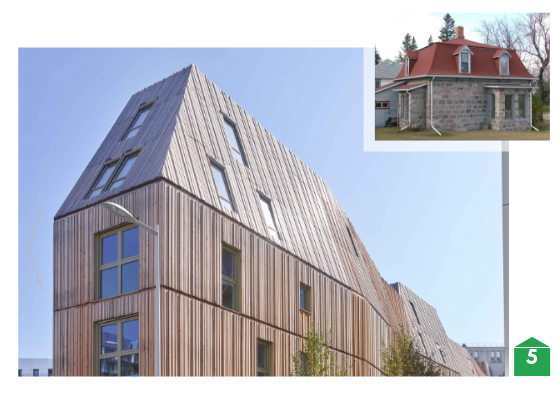
Not typically seen in Australian architecture, but popular in Europe throughout the 17th Century, the Mansard roof can be described as a mix between a gambrel and hip roof. Like the gambrel roof, its steep pitch increases the habitable space of a building, but where a gambrel only has two sloping sides, a mansard roof has four. While contemporary examples of this style are few and far between, the building above demonstrates the basic design principles of a mansard roof applied with modern detailing to a block of residential units in France.
5b) Image/Architect: Tetrarc
We hope you found the information in this blog useful and interesting!
If you'd like any further roofing advice, or would like to discuss any specific concerns with your roof, please don't hesitate to give us a call and have a chat with one of our friendly roofing experts!
1800 476 634
You can also request a complimentary roof inspection and quote by clicking this link:
Updated 13th Jan to provide most current information.


